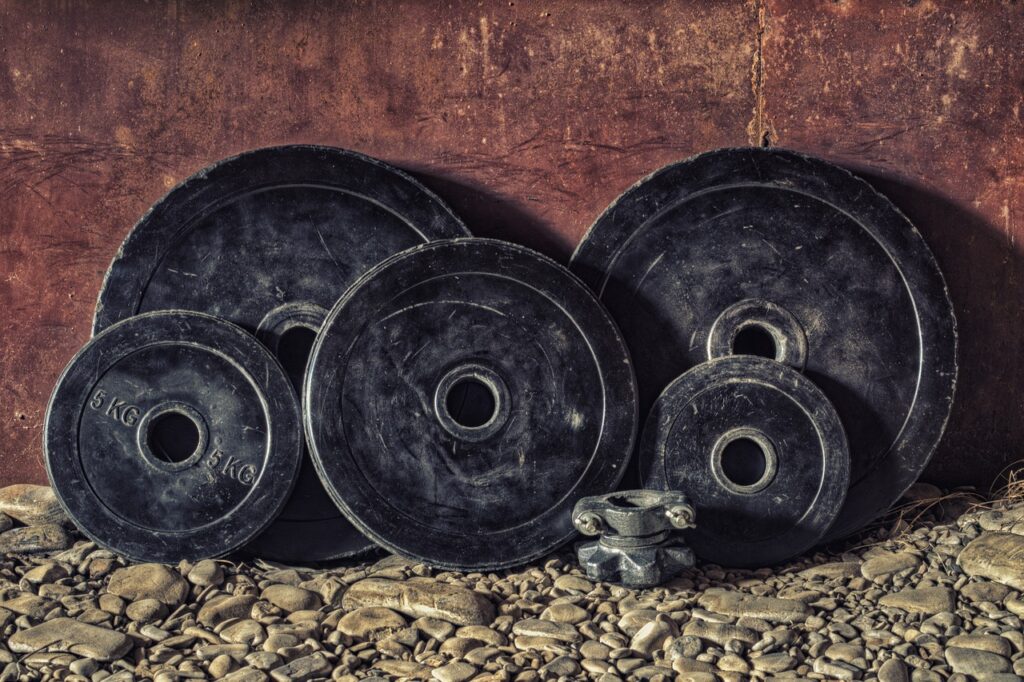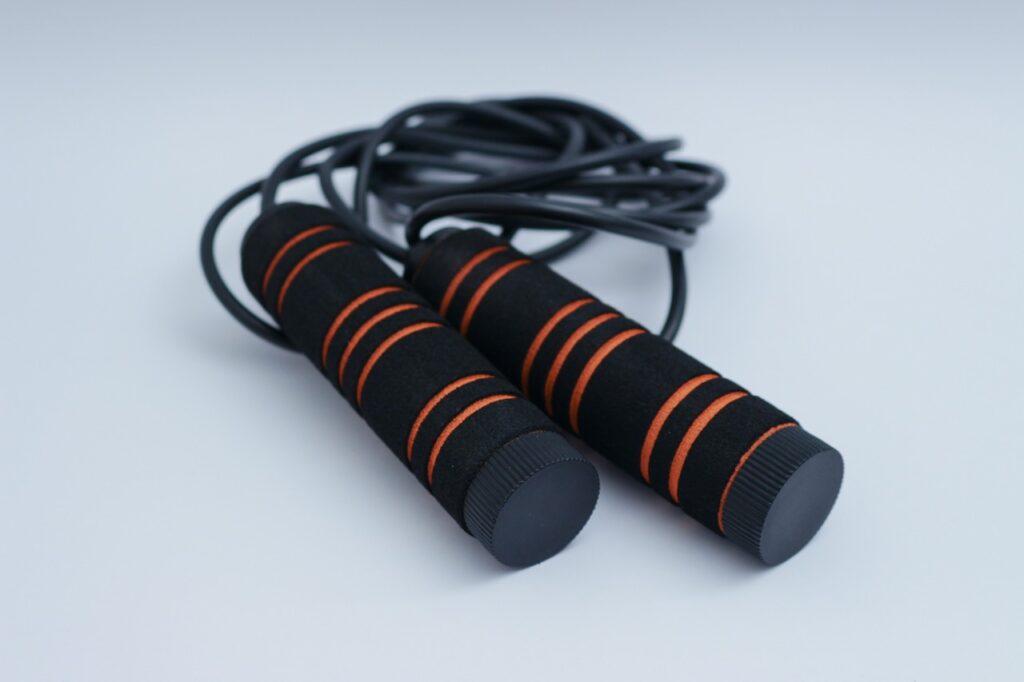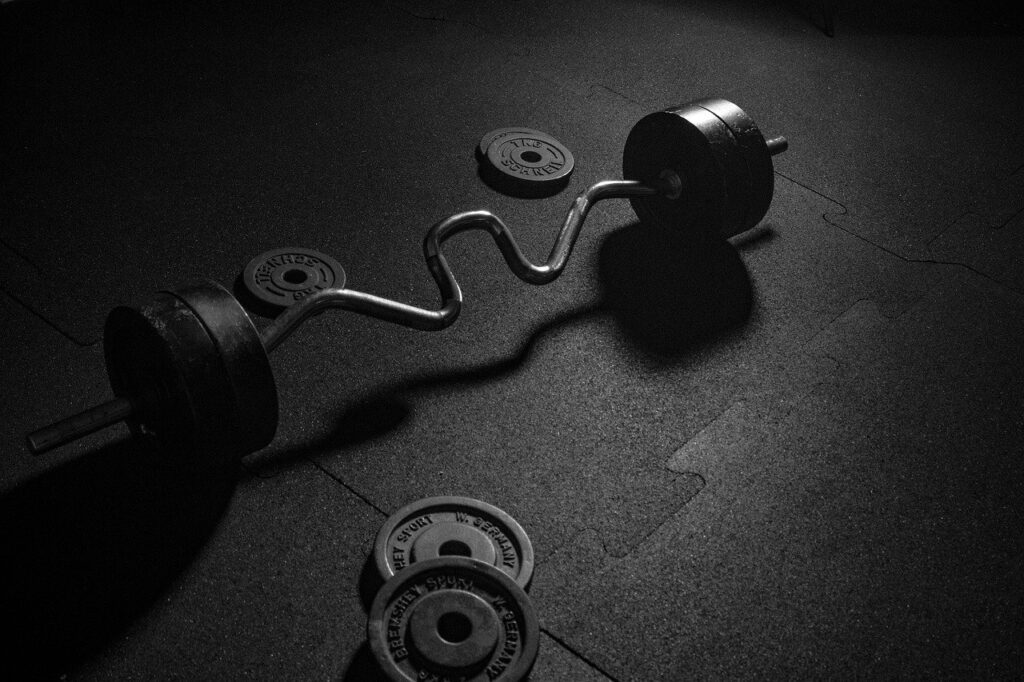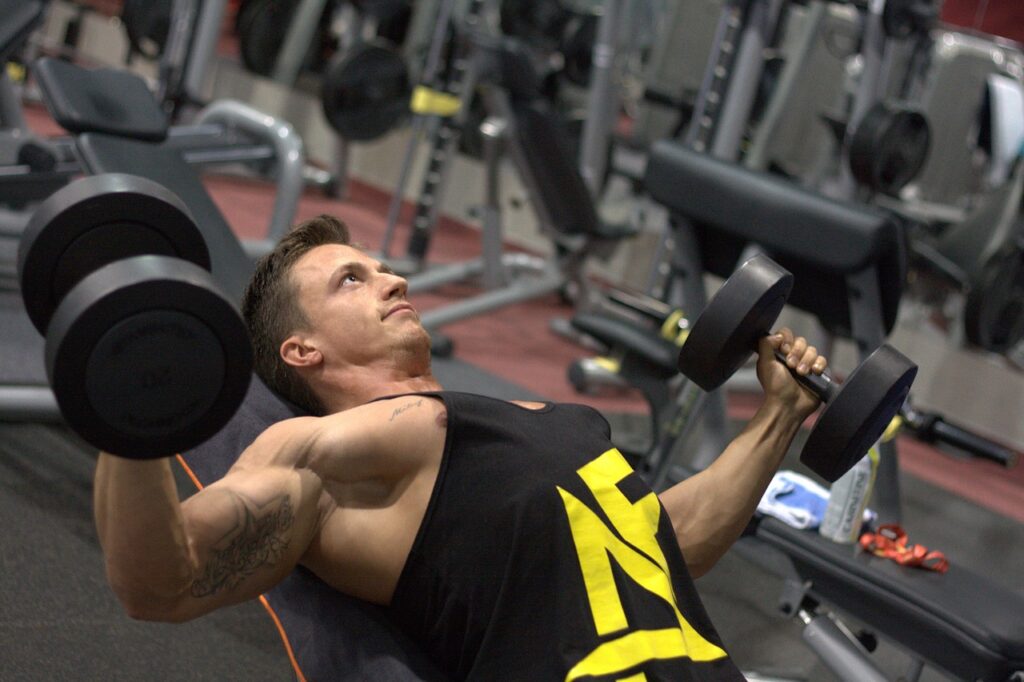You might have wondered how often you should exercise, regardless of where you are in your journey toward better health and fitness. Is it better to forego going to the gym a couple of times per week? Or will a consistent effort result in bigger rewards?
Everyone is unique. Nevertheless, if you want to exercise six days per week, there are a few considerations you need to take into mind first. One is how your physical being deals with stressful situations. "Training stress boils down to volume and intensity (i.e., how much and how hard you train)", says Geoff Tripp, CSCS, a certified personal trainer and the head of fitness at Trainiac. He suggests performing challenging, moderate, and simple exercises each week to achieve optimal outcomes while minimising the possibility of damage.
According to Tripp, the weekly training volume recommended for you will depend on how long you have been consistently exercising. In general, your body will be able to take more stress if you exercise for a longer time. In contrast, a beginner will most likely need some time to develop a foundation in terms of their fitness, and according to Tripp, a beginner should exercise caution when doing too much or too fast.
You will be able to pay attention to your body's signals (always listen to what it's telling you! ), train properly, and train effectively if you are willing to commit to six sweat sessions per week if you follow the tried-and-true advice that is provided in this article in conjunction with a workout program that Tripp designed.
1. Including Active Recovery
When you go to the gym six days a week, you don't have to make every workout a high-impact, high-intensity event. According to Tripp, having longer days is also quite important. He continues by saying, "Your workouts do not necessarily need to be tough on your body to notice advantages".
A day spent engaging in active recoveries, such as practising yoga, going on a hike, or working on mobility exercises, is analogous to pressing the "reset" button on your body. According to Tripp, adaption occurs between your various efforts made with diligence.
It is recommended that you schedule at least one full day of rest or recovery every week to help your body recover from the strain of exercise and, as a result, raise your level of fitness.
Even people who exercise to lose the most weight can sometimes find that their progress could be faster. Worse yet, people sometimes observe that their friends have lost weight within a few weeks after starting a new fitness routine, which makes their situation much more frustrating. It has the potential to be confusing and aggravating.
So, what differentiates one fitness program from another regarding weight loss? Several factors are likely involved here. On the other hand, in many of these cases, the issue may be traced back to one of these blunders. If you've been trying to lose weight, but your current exercise routine isn't producing the results you want, you should examine whether or not you're making one of these common workout blunders.
2. Making Up for It by Eating More
When you add exercise to your routine, especially if you exercise daily, you will find that you are more hungry than usual. Because there is frequently a voice in your head that tells you, "I deserve to eat anything I want because I worked out today", it might be difficult to conquer hunger.
That defence makes sense, given the circumstances. But, on the other hand, if you want to lose weight through activity, you need to have a definite calorie deficit after the day. For example, suppose you satisfy your hunger after your workout with high-calorie foods or even an excessive amount of nutritious food. In that case, you will consume the same number of calories you burned during your workout. After then, any possible weight loss and reduction in calorie intake will be null and void.
Which Benefits Exist?
If you're only experiencing mild discomfort, you might benefit from a more "active" form of recovery. It's possible that things like:
- Massage sore muscles with warm water.
- You should perform workouts for the core and other light resistance exercises.
- Perform aerobic exercises of moderate intensity, such as walking or swimming.
In addition, you will have the opportunity to focus on the muscles you have yet to train. For example, the day after you've gone for a run, you should do an arm weight regimen.
In addition to improving your mood, light recovery exercise might also positively affect your physical health. Activities that enhance the quantity of blood flowing through the muscles are referred to as mobility or full-range activities. Examples of these activities are walking and easy cycling. Your speedier recovery from pain is likely to result from increased blood flow. Assuming, of course, you do not overwork the muscles or place additional strain on them.
Doing exercises designed to aid healing could be just as beneficial as getting a massage. For example, in one investigation, a group of participants' levels of discomfort were evaluated forty-eight hours after they had completed upper trapezius strengthening exercises.
After the event was over, certain members of the group were given 10-minute massages. Others performed workouts with resistance bands. However, the researchers discovered that both recovery approaches were equally helpful in reducing DOMS symptoms for a shorter period. More investigation is required in this area.
3. Mix Up Your Exercises
According to Tripp, if you continue to perform the same workout cycle at the same intensity, you will not see changes in your fitness over the long run. However, your body will gradually acclimate to the new conditions because of the stress. And when that happens, you'll probably find that your development stalls out, that you hit a plateau, and that you become exhausted.
Variation is really necessary to keep making improvements. According to Tripp, cross-training, which involves alternating between high-intensity interval training (HIIT), strength training, and cardio, offers diversity and balance to your week. In addition, the American Council on Exercise suggests that including some variety in the activities you participate in weekly might not only assist you in achieving your weight loss goals but also lower the risk of injury.
If you finish your workouts feeling utterly drained, it may be time to rethink the program that you are following. It is important to ensure that your high-intensity workouts are completed in a reasonable amount of time and that you schedule some easy recovery days throughout the week to allow your body to recuperate and rebuild itself.
In addition, keep in mind that the lack of NEAT may not necessarily be the result of the activity you just did. People will sometimes choose to sleep on the couch or sit in a chair all day rather than admit that they are too tired to move. If you can, make it a point to exercise in the afternoon instead of taking a nap. Stuck in a rut at the office? Try working at a standing desk or taking frequent breaks to walk around and stretch your legs.
Purchasing Supplements
Do you refill your body with sports drinks or bars during or after your workout? If this is the case, the recent calorie loss you experienced is probably being undone. 3 Water is the best choice for hydration for the vast majority of people who exercise. But, athletes may, on occasion, require sports drinks.
It's also possible that the post-workout meal supplement you're taking isn't providing much assistance either. You can purchase hundreds of products, but unfortunately, the vast majority only make empty promises and drain your money account.
Instead of spending money on bars, drinks, or supplements, consider getting a consultation with a qualified dietitian or professional sports nutritionist. They will help to ensure that you consume enough of the appropriate kinds of calories for you to recuperate to your maximum potential after your workout.
4. Change Up Your Focused Muscles
The frequency of your workouts and the muscle areas you should focus on strengthening will be determined by the precise fitness goals you have set for yourself. On the other hand, concentrating your efforts during each workout on the same group of muscles is not a wise decision.
For instance, Tripp asserts that engaging in upper-body strength training for six days straight is a recipe for overstress and the possibility of injury. Therefore, it is essential to develop strategies for minimising the stress that exercise causes on your muscles. After completing intensive strength training, Tripp recommends giving the body at least 24 to 48 hours of rest to allow the tissues to repair before testing the same muscles again.
Rotating between different target muscle groups is your best bet for safe and effective training. Therefore, if you train your upper body on Monday, you should train your legs the following day, Tuesday. In addition, it affords your firearms a significant amount of time to recuperate and strengthen themselves.
Muscle Deterioration And Growth
After intense activity, a breakdown in the muscular tissue or minute muscle tears are probably to blame for delayed onset muscle soreness (DOMS). If you try a new activity or raise the intensity of your current routine, you can experience more muscle soreness in the days following a workout.
However, over time, your muscles will adapt to your actions. They won't decay or tear as rapidly, thanks to the treatment.
For the microtears to progressively grow back stronger, the body will use satellite cells to heal them. It not only helps the muscle to grow, but it also protects it from additional harm.
For this process to occur, it is essential to consume a suitable amount of protein and allow your muscles to rest.
Which Dangers Exist?
Recuperation exercises that aren't too strenuous can be helpful. However, excessive exercise can hurt your health and even be dangerous.
If you experience any of the following symptoms, you must stop exercising immediately and give your body some time to rest. Notify your primary care physician if you have any of the following symptoms:
- a higher resting heart rate
- depressive or mood changes
- more frequent colds or other illnesses
- overuse injuries
- joint or muscle discomfort
- constant exhaustion
- inability to sleep
- decreased appetite
- the decline in athletic ability or only a slight improvement even after resting
5. The Need Of Long-Term Recovery
When you work out using only your body weight, your muscles aren't under as much stress as they would be if you were lifting weights. As a result, recovery isn't as vital. Recuperation, on the other hand, is a vital component of building muscle while lifting weights.
Aguirre recommends that you push your muscles to their limits, and because of this, you will require recovery time. They require time to enlarge, become denser, and become more robust. The duration of the process is contingent on the individual and the training program.
Aguirre suggests that the average individual focuses their workouts on a single muscle or muscle group and limits the frequency of their workouts to no more than three times per week. Then, wait between twenty-four and forty-eight hours to give that muscle a chance to recover before working it out again. Because of this, your muscles will be able to repair themselves effectively and, consequently, get larger. During this phase, you can exercise various muscle groups, participate in active recovery exercises such as running or engage in other activities.
Squatting for one hundred repetitions is an excellent way to get your body moving and fulfil your daily workout requirements. However, if you want your muscles to expand, you must start lifting weights and working out. It is considered extremely conceivable for people of any body type to develop a larger rear region, although the process will take time and effort.
When discussing how to create muscle, it is essential to comprehend and acknowledge that many different sorts of bodies exist. Booties in every size, with no matte finish.
6. Workout Schedule For Six Days A Week
This one-week example plan from Tripp is designed to optimise your fitness gains through various strength, cardio, and high-intensity interval training (HIIT) routines while also giving you a balance of hard, medium, and easy days.
- Sunday: Rest day. Spend this time doing nothing or indulging in some very light exercise such as walking, stretching, or foam rolling.
- Strength training for the upper body and the core on Monday. You can strengthen your abdominal muscles by using free weights, your body weight, or exercise machines that simulate the motion of pushing and pulling. The total time should range from thirty to sixty minutes.
- Lower-body cardio will be on Tuesday. On an elliptical machine, while running, riding a bike, or cycling, give your lower body 30 to 60 minutes of moderately intense exercise.
- Wednesday: Full-body HIIT. This full-body workout that only takes 30 minutes should emphasise building strength and endurance by including a high number of repetitions with light to moderate levels of resistance.
- Thursday will be a day of light cardio. You may go for a 30-minute brisk walk, ride your bike casually, or go for a short jog.
- Strength training for the lower body and the core on Fridays. Combine workouts for the abs and lower body that include pushing and pulling with free weights, your body weight, weight machines, or a combination of all three. The total time should range from thirty to sixty minutes.
- Active recovery will take place on Saturday. Participate in a short yoga session, mild aerobics, a fast stroll, or a mobility circuit. You should aim for between 20 and 30 minutes.
7. Techniques For Avoiding Pain
After your workout, take some time to cool down to help prevent DOMS. In contrast to what happens during a warm-up, during a cool-down, your body gradually returns to its resting condition while your heart rate gradually slows down.
Walk around the block for five to ten minutes, or take an easy spin on an exercise bike to get started. The subsequent five to ten minutes of stretching may also contribute to eliminating lactic acid from the body. When you exercise, lactic acid builds up in your muscles, which can give you the sensation that your muscles are on fire. If you get rid of it, you can recuperate from your most recent workout in less time.
You can use a foam roller to help relieve any stress that may have built up after your workout.
The discomfort you feel in your muscles may be avoided or reduced by performing the following recovery activities in the days after your workout:
- activities like yoga and stretching while using resistance bands
- easy trekking or walking
- lap swimming
- easy cycling
When starting a new fitness routine for the first time or attempting a new sort of exercise for the first time, it is essential to take things carefully. It is possible to prevent muscle soreness by gradually increasing the number of workouts and the level of intensity. Before beginning a new exercise routine, you should always get your physician's okay first.
After you have recovered from your injury, you should be able to resume your normal workout routine within a few days to a week, depending on how to fit you are already and how much pain you are in. Consult an experienced fitness professional to build a training regimen that is risk-free and helpful for you.
8. Make An Effort To Fatigue Your Muscles
During a workout using only your body weight, the focus is less on gaining muscle and more on improving muscle endurance. For example, an article on 24life.com states that when you run, you increase the number of calories you burn and help your muscles become more resistant to the effects of workouts like jogging.
In addition, workouts that use only one's body weight help one burn calories and can lead to a net loss of calories. An article published on verywellfit.com was reviewed by a registered dietitian, who concluded that fat loss might occur when your body burns more calories than it takes in through the food you eat.
When you have less body fat, your muscles will make you look more muscular than you are. Therefore, rather than adding additional muscle to your body, you are "toning" it by executing these workouts, which means that your body is becoming more defined.
Globe University provided Gerardo Aguirre, a professional personal trainer and expert in performance enhancement, with the opportunity to get a degree in health and fitness. Aguirre, the owner of the HIIT and weightlifting facility G-Force in Stillwater, Minnesota, spoke with VALLEY about the benefits and drawbacks of developing one's muscularity.
The Main Idea
It is normally acceptable to engage in light recovery activities such as walking or swimming, even if you are experiencing pain due to your workout. They may assist you in recuperating more rapidly and provide other benefits. However, you must take a break if you are experiencing exhaustion or pain.
If the discomfort is still there after a few days or if you feel that you may have sustained an injury, you should see a doctor.
Even the most experienced athletes need to rest every once in a while. If you add days of rest and recovery into your normal workout regimen, you will notice an improvement in your performance the following time you hit the gym.
Can I exercise 6 days a week forever?
Some people can exercise six days a week, but listening to your body and avoiding overtraining is vital. Some thoughts:
- Periodise your training: Include low-intensity or active rest times. Resting prevents burnout and overuse injuries.
- Track progress: Check your progress and listen to your body. Change your regimen if you observe a drop in performance, weariness, or motivation.
- Recover well: To aid recovery, prioritise sleep, diet, and hydration. Take regular rest days or light activities.
- Consult experts: If you're worried about your workout routine's sustainability, see a healthcare practitioner or experienced trainer who can tailor advice to your circumstances.
How can I prevent workout fatigue when working out 6 days a week?
Prioritize sleep, proper nutrition, hydration, progressive overload, periodization, stress management, listening to your body, and finding enjoyment in workouts.
Can I substitute a rest day with low-intensity workouts?
True rest days are crucial for recovery. Light activities can be incorporated, but complete rest is recommended to prevent overuse injuries.
Can I work out 6 days a week indefinitely?
Periodize your training, monitor progress, ensure sufficient recovery, and consult professionals if unsure.
Should I modify my diet when working out six days a week?
Focus on a balanced diet, consider calorie intake for weight goals, prioritize pre and post-workout nutrition, stay hydrated, and consult a professional for personalized advice.



